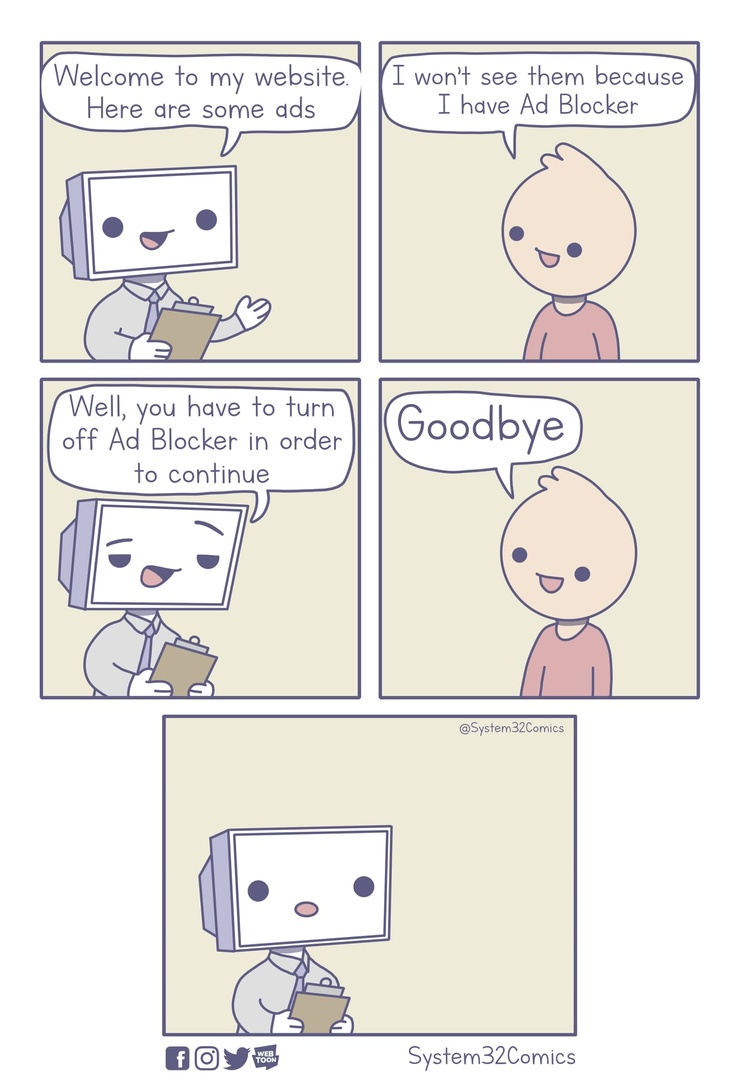Everything posted by jjakucyk
-
So Ads or Subscription Are the Only Options Now?
- So Ads or Subscription Are the Only Options Now?
The nag screen now only shows "I've disabled my ad blocker" as an option. No more "dismiss, will reappear in 5 days." So our only choice to view the site is to allow ads that could compromise our computers or purchase a subscription?- Smells of the City
Oh god anything but Fabuloso! My sincerest condolences.- Cincinnati: Oakley: Development and News
Why is this suddenly needed now and not when the Kennedy Connector was built just a handful of years ago? Did trucks not exist in 2012? Today's intersection is still more generous than the older Madison/Ibsen, and that was the access from westbound Madison to I-71 back then too. Where are all these trucks coming from? Ilsco and Coca-Cola can use Duck Creek or Red Bank.- Cincinnati: Oakley: Development and News
Or instead of being condescending how about answering the question? Turn radii are independent of the number of lanes. It's much easier to round off a corner for trucks than to add a turn lane AND round off the new corner because that gobbles up even more land. Also, did the Oakley Community Council state that they wanted this turn lane for trucks, or are you just projecting? What trucks are using this stretch of road that need so much accommodation? The railroad overpass at the creek has a height clearance of 13'-6" which is also the allowable height of semi tractor trailers, so I don't think many are going through there. That's what Oaklawn and Duck Creek are for.- Cincinnati: Oakley: Development and News
How does it even help? Trucks need a wide turn radius, right turn lanes don't do that.- Cincinnati: Oakley: Development and News
Geesh, maybe instead of adding a right turn lane, which is one of the least-effective and urban-unfriendly devices in road design, they could use that space for the outdoor dining plaza shown in the renderings. Instead they removed 80% of it and added a little slip-entrance too. Hurr durr traffick flowz! Also why put the drive-up restaurant on the corner? I was scratching my head trying to figure out what that was until I saw the Swensons note. This is a typical suburban development pattern, just flipped front-to-back. It'll likely turn out little better than this abomination at Rookwood, especially once they realize there's a good 12 feet of elevation change along the length of the property that need to be dealt with. https://goo.gl/maps/FBozTpEpBofaA1Lz8- Cincinnati: CUF / Corryville: Development and News
- Cincinnati: CUF / Corryville: Development and News
UC *is* a major urban campus. While the data is out there, I couldn't find a comprehensive analysis over time, but this report from 2016 shows a marked decline in "type I" crimes (murder/manslaughter, assault, robbery, burglary, rape, theft) from the beginning of the decade. What's interesting is that the majority of nearly every crime is perpetuated against non-students. They don't really say who those non-students are, like if they're faculty, staff, visitors, or just people wandering through campus. Nevertheless, robberies and assaults are very low numbers, like low single-digit or at worst low double-digit numbers of incidents per year. Burglaries, theft, and theft from vehicles are the much more prevalent crimes (never mind alcohol and drugs), which usually amount to people leaving their phone or laptop out and someone swiping it. None of these things are fixed by walling off campus from the neighborhood. UC has 46,000 students and 7,000 staff. That's bigger than Covington, whose crime stats are an order of magnitude higher.- Cincinnati: CUF / Corryville: Development and News
No but on a college campus' most prominent (and formal) street I'd expect more than the same trendy schlock circa 2013 that's churned out for every bland apartment block, speculative office building, and suburban medical center from Miami to Vancouver. Kudos for only one of the four renderings being a helicopter shot, but it also shows just how uninviting it is at street (and plaza) level.- Cincinnati: CUF / Corryville: Development and News
It's so...typical.- Cincinnati: Random Development and News
It has a long way to go to connect to anywhere. I'd usually ride it once a year or so and it was always a bit sketchy because of tree litter. This summer I happened upon the homeless camp and...wow. So a flood must have knocked over the fence, but then people moved in after that? It's sad AF.- Cincinnati: Random Development and News
Welp, there goes my evening.- Cincinnati: Random Development and News
- Cincinnati: Madisonville: Development and News
Sure but my point was that if they want to be convenient to morning traffic, then being in the triangle is a problem from Red Bank, even if it improves it for Madison. You can't turn left from eastbound Madison onto Medpace and I bet the city wouldn't approve a curb cut on Madison at all unless it was strictly right-in-right-out. You can't even turn right from northbound Red Bank onto Medpace at Duck Creek to backtrack either. So there's actually no way to get to the triangle from northbound Red Bank without bridging the creek or going through the Medpace complex via Red Bank Drive (at the very bottom left of your map).- Cincinnati: Madisonville: Development and News
Only on Red Bank. The "morning side" of Madison is the north side of the street. The east fork (?) of Duck Creek is out in the open next to Red Bank north of Madison, so putting UDF in the "triangle" between Red Bank, Madison, and Medpace Way would require a bridge or big culvert for direct access to Red Bank.- Cincinnati: Random Development and News
Right, this has "what's the point anymore?" written all over it. Lockland wants to keep a direct connection to I-75 but Millsdale is literally the southern border of town (and Shepherd Lane is the northern border). You'd think they could come up with something better.- Cincinnati: Over-the-Rhine: Development and News
Most furnaces don't have outside air either, never mind hot water systems. Simply adding a duct from the outside to your return plenum, can flood your home with moisture and pollen in summer, and will dry out the air terribly in winter while also driving up fuel costs. Most people don't want to spend the extra $1,500 for an ERV to temper the incoming air. A 100% fresh air system would be crazy expensive to run, very difficult to temper properly in cold/dry, hot/humid, or even cool/wet conditions, and would complicate ducting too because you need to exhaust all that air out after bringing it in. Commercial has had requirements for outdoor air (generally it's 10%) forever, so I'd be surprised to find dorms and hotels where that's not already provided. It's easy to do with PTACs by just having a little damper through to the outside grille, and rooftop units have outdoor air dampers. Sometimes they can be pretty subtle. Daniels Hall at UC has hot/chilled water coils in each dorm room, but they're also fed air from a central system with little jets/nozzles in each unit to help induce draft across the coil and also provide the fresh air. Commercial systems need to be upsized to handle the additional load, but they also need air balancing with exhaust fans to operate correctly, they go through filters like crazy, and they're more expensive to maintain.- Cincinnati: Downtown: Development and News
Wow those are great! Very intrigued by the one showing the building to the south at its full height after Butler Brothers re-cladding. Hard to tell if it's just a problem with the photo print, but it does look kind of...hmm...crispy.- Cincinnati: Over-the-Rhine: Development and News
One mini-split outdoor condenser unit can run multiple indoor air handlers (three is typical) so it's not that much more equipment. The trick is that the indoor units need a condensate drain, which isn't always the easiest thing to locate. Heat pump technology has improved quite a bit over the last 10 years to the point that Norway, of all places, has become a major adopter. The units in Asia I think are just air conditioners. 50F temperatures are ideal for a heat pump, even 40 years ago, so there's no way temperatures like that would cause a problem in buildings that have any heating systems at all. It's below freezing where you need to start thinking more carefully about it. Still, I've worked on projects with heat pumps here in Cincinnati where the heating design temperature is 0F, and it was a 100 year old un-insulated building. More stringent insulation requirements came about in the 2017 commercial and 2019 residential building codes, so a heat pump mini-split shouldn't have any issues. Also, considering the "skip all insulation including double-paned windows and pass the higher utility costs onto tenants" idea, if you put a little thought into it, the better system could still be cheaper. No insulation and single-pane windows means a much bigger HVAC system. That could mean now you need to run gas to each unit, which needs venting and more ductwork, bigger air conditioner condensers, supplementary units in rooms that wouldn't need them otherwise, etc. In somewhat colder climates, better insulation/windows means you can completely eliminate your entire perimeter heating system (baseboard radiators mostly) and instead rely on the air handlers. That leads to a net decrease in upfront cost.- Cincinnati: Madisonville: Development and News
^ Yeah that's pretty much what construction/renovations cost.- Cincinnati: West End: Development and News
Yeah, no, sorry. A median cycle track doesn't eliminate conflicts with turning vehicles (right hooks become left hooks), and now all bike turns require crossing traffic instead of just left turns. Countries that figured this out decades ago (Netherlands, Denmark, Belgium) don't do two-way cycle tracks with roads, except next to freeways or rural highways, and they're still on one side rather than down the middle. Urban infrastructure is one-way bike lanes (whether raised, protected, or flush) between the right side of the roadway and the sidewalk. The only decision then is which side the parking (if any) goes on. This really isn't difficult.- Monorails
But just because they can do it doesn't mean it's simple, cost-effective, or low-maintenance. Passing sidings, crossovers, or a single turnout are cumbersome but doable sure. Flush crossings, such as a two-track branch line splitting off of a two-track mainline, either require multiple switches and opposite-direction movements with pinch points and delays, or flyovers, which still require switches.- Monorails
Wuppertal was built as a suspended railway because the river was the only available corridor and it was a major steel producing region which reduced the cost of construction. A pretty unique situation. Yes there's some systems in Japan too. This video of the Shonan Monorail is pretty cool. It's single-track with some massive switches at stations that are also passing sidings. But notice how built-up it is along its whole length. That's New York, Chicago, or San Francisco inner city density. Also, at 4.1 miles long, with 8 stations, and a 14 minute end-to-end time, that's not even an 18mph schedule speed. Cut the stations in half and a 34 mile run is still going to be well over an hour, maybe closer to an hour and a half. That's not particularly competitive or compelling. There appear to be 29 monorail systems in the world that fall under the urban transit or people mover definition. That does not include systems at airports, amusement parks, or Jungle Jim's. Conversely, there's about 800 streetcar or light rail systems.- Cincinnati: Downtown: Development and News
Eh, fresh air had been a tenet of healthcare for a long time already. Before reliable thermostats it was easier to just overheat a building and let the everyone open their windows to regulate the temperature. Steam heating systems are very difficult to balance as it is, so there weren't really other options. - So Ads or Subscription Are the Only Options Now?









